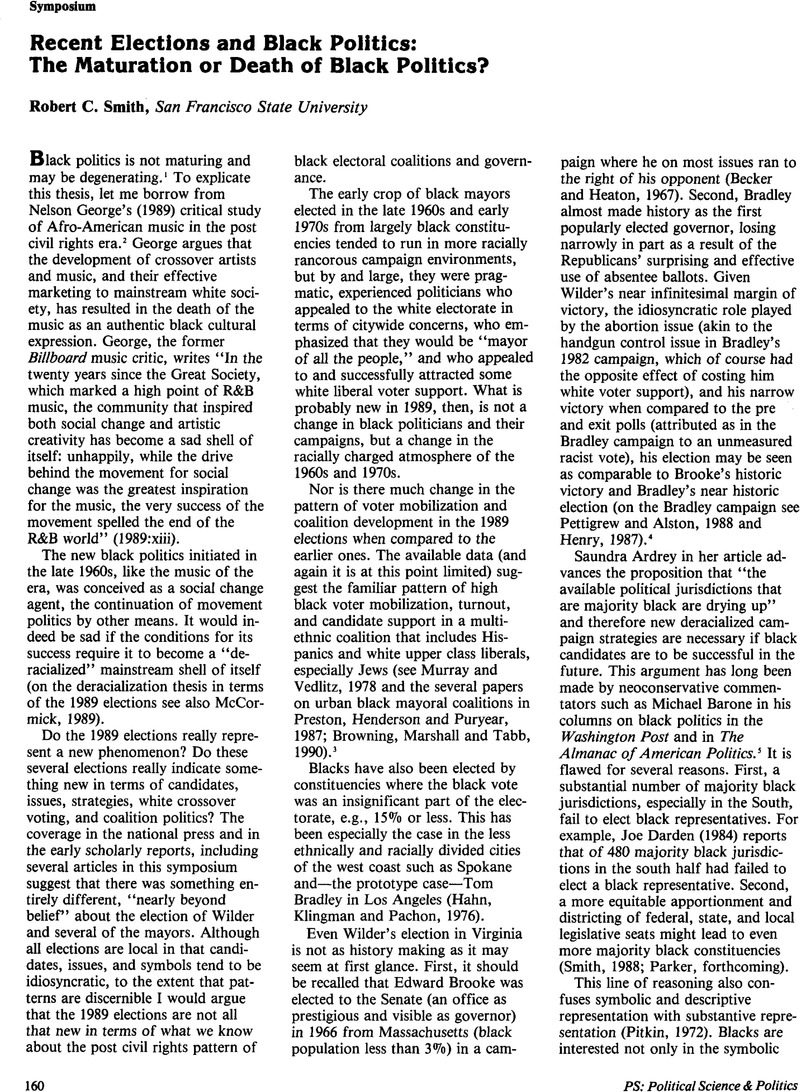Crossref Citations
This article has been cited by the following publications. This list is generated based on data provided by Crossref.
Overby, L. Marvin
and
Cosgrove, Kenneth M.
1996.
Unintended Consequences? Racial Redistricting and the Representation of Minority Interests.
The Journal of Politics,
Vol. 58,
Issue. 2,
p.
540.
Schaffner, Brian F.
and
Gadson, Mark
2004.
Reinforcing Stereotypes? Race and Local Television News Coverage of Congress*.
Social Science Quarterly,
Vol. 85,
Issue. 3,
p.
604.
Harden-Russell, Aiisha M.
2011.
The Appeal of Black Republican Candidates: Does Party and Gender Matter? An Experimental Study.
SSRN Electronic Journal,



